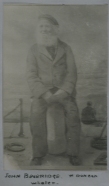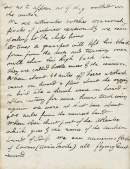Whaling Home | Danger at Sea | Next
Summer in the Arctic

Voyages to the whaling grounds in the Arctic always took place during the summer months. This was the best time to visit the area because of the ice conditions. It also coincided with the migration patterns of the right whales, which they hunted. A normal voyage began in Scotland in April with a visit to Orkney or Shetland. Here, the ships would fill any empty places in the crew. The islanders were considered excellent seamen and skilled harpooners. After a two-week voyage across the North Atlantic, they would arrive at the mouth of the Davis Straits and their first port of call, the island of Disco. Depending on ice conditions, they would sail north in roughly an anti-clockwise direction by skirting the west coast of Greenland as far a Cape York. They would then cross to the Canadian coast where they would continue south along its many inlets and bays until the ice building from the land forced them to leave for home. This was probably about the end of September. These long journeys meant that the men had much free time. Some of this was spent bone carving.

During the time in the Davis Straits, they would be constantly on the alert for whales. In quiet periods they would also hunt walrus, seals and bears. These were a valuable addition to the catch. There are also documented visits to the Duck Islands where huge quantities of Eider eggs were collected. Mention is also made of the Salmon River where a judiciously placed net could snare hundreds of salmon (probably Arctic Char), which were cleaned and dried.
During their voyages, the whalemen met the native peoples of the Arctic. The Westerners considered them savages.